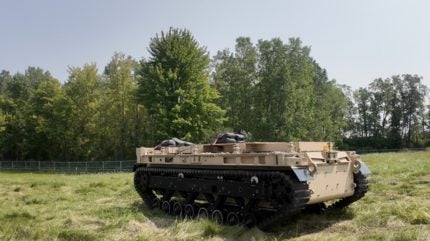
Three of four companies participating in the US Army’s Robotic Combat Vehicle (RCV) programme have delivered two prototypes respectively, according to updates from each over the last several weeks.
The service requires platform prototypes as part of the first phase of the industrial competition, whereupon they are delivered to Aberdeen Proving Ground in Maryland.
At the end of September 2023, the Army selected four teams to participate, including McQ; Textron Systems Corporation; General Dynamics Land Systems (GDLS); and Oshkosh Defense. The total combined base award value was approximately $25m.
RCV competition
The Army intend to develop three RCV variants: Light, Medium, and Heavy.
After the first prototype phase, the Army then plans to initiate a competition to “pick the best of breed” for eventual production.
Phase II will comprise a base award of $119m and calls for down-selected contractors to deliver nine RCV Production Representative Prototypes in early 2026.
How well do you really know your competitors?
Access the most comprehensive Company Profiles on the market, powered by GlobalData. Save hours of research. Gain competitive edge.

Thank you!
Your download email will arrive shortly
Not ready to buy yet? Download a free sample
We are confident about the unique quality of our Company Profiles. However, we want you to make the most beneficial decision for your business, so we offer a free sample that you can download by submitting the below form
By GlobalDataAccording to a Congressional Research Service report on the RCV programme, updated in July 2024, the Army intends to field the first unit in FY2028 following a production decision scheduled for FY2027.
Oshkosh Defense was the first to deliver its prototype in mid-August, according to a company statement on 12 September 2024.
GDLS delivered its entrant, the Tracked Robot 10-tonne (TRK) RCV, on 2 October. The platform manoeuvres at speed with all formations and has a class-leading payload-to-chassis ratio of 1:1. It generates exportable power to support mission command operations and is hybrid-electric, providing operational benefits and support to the Army’s climate and electrification strategy.
Textron delivered its prototype, the RIPSAW M3, a day later. With collaborative support from Howe & Howe and Teledyne FLIR Defense, the vehicle uses a modular open systems architecture design and common chassis to support a variety of interchangeable payloads from a basic flat-top deck configuration.
So far, the team led by McQ Inc, with support from BAE Systems and HDT Global, have yet to release details regarding the delivery of its prototype vehicle.
A hybrid force
Later, at the start of 2024, the US Army unveiled a new plan to reshape its force structure so that they no longer “trade blood for first contact,” one spokesperson memorably put it during the International Armoured Vehicles conference in London.
This soldier-centric outlook therefore gives way to a human machine interface, where advanced robotic combat vehicles are used as ‘scouts’ and ‘escorts’ for crewed fighting vehicles to deter ambushes and to guard the flanks of mechanised formations.
The US is learning lessons from Ukraine – where numerous Bradley Infantry Fighting Vehicles have been destroyed and left abandoned in the so-called ‘Bradley Square’, in the southern Zaporizhzhia region.
Operators riding in next generation combat vehicles will control the RCVs, but the Army hopes that improved ground navigation technology and artificial intelligence might eventually permit a single operator to control multiple RCVs or for RCVs to operate in a more autonomous mode.



